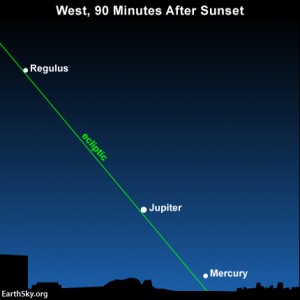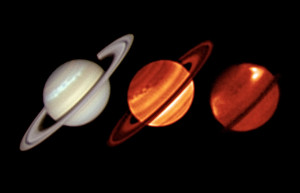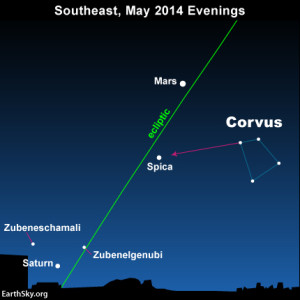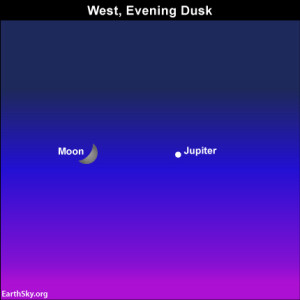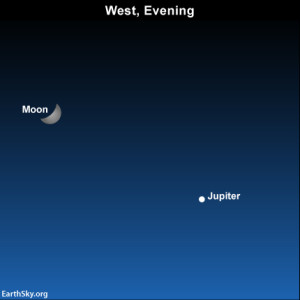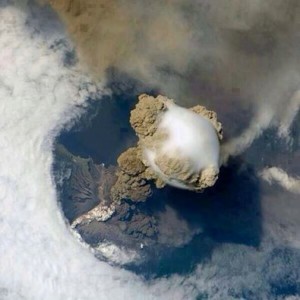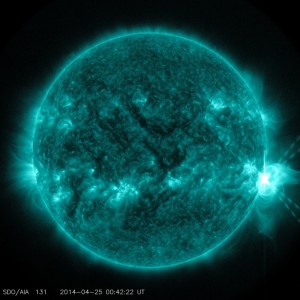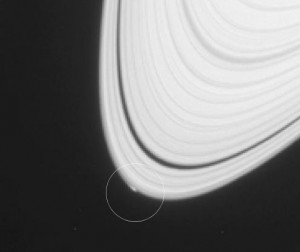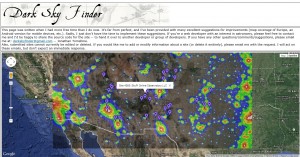Mercury farthest east of setting sun on May 25
- May 25, 2014
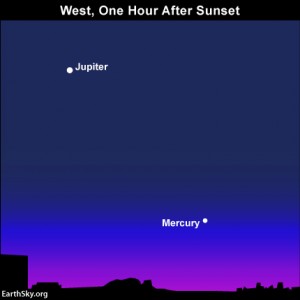
Mercury, the solar system’s innermost planet, orbits the sun inside of Earth’s orbit. Therefore, Mercury always stays close to the sun in Earth’s sky and is often lost in the sun’s glare. But Mercury reaches its greatest elongation – greatest angular distance – east of the sun on May 25, so this world can now be spotted low in the west-northeast as dusk ebbs into darkness. As always, binoculars help out with any Mercury quest.
The planet Jupiter is the first “star” to pop out after sunset. If you’re familiar with the star Regulus, you can draw an imaginary line from Regulus and past Jupiter to locate Mercury near the sunset point on the horizon. (See sky chart below.) Given a clear sky and unobstructed horizon, Mercury could be visible to the unaided eye about 60 to 90 minutes after sunset. If not, try binoculars.
Although Mercury shines more brightly than Regulus does, you might see Regulus first because it’s not as obscured by the glow of evening twilight. What is the ecliptic?
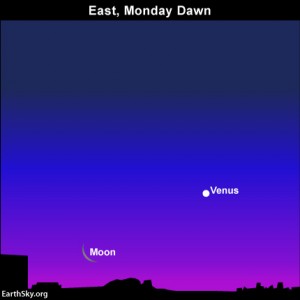
…and don’t forget the morning sky, which features the dazzling planet Venus and a thin waning crescent moon on Monday, May 26.
Setting times of the sun and Mercury in your sky
At an elongation of 23o Mercury lies far enough east of setting sun to stay out until the end of astronomical twilight (at mid-northern latitudes). By definition, astronomical twilight ends in the evening sky when the sun is 18o below the horizon. For reference, the sun’s diameter equals one-half degree, and your fist at an arm length approximates 10o.
Because Mercury is setting a maximum amount of time after sunset right now, this is your chance to catch Mercury low in the west at late dusk or nightfall. But don’t tarry when seeking this elusive yet surprisingly bright world, for Mercury – even now – follows the sun beneath the horizon around nightfall. At mid-northern latitudes, astronomical twilight ends nearly two hours after sunset, at about the same time that Mercury sets beneath the horizon.
End of nautical twilight and Mercury’s setting time in your sky
We should mention that the Northern Hemisphere enjoys the better view of this particular evening apparition of Mercury. That’s because the ecliptic – the pathway of the planets – hits the horizon at a steeper angle as the sun sets in the Northern Hemisphere sky.
Mercury stands higher over the horizon at sunset in Northern Hemisphere than at comparable latitudes in the Southern Hemisphere. For instance, at 40o north latitude – the latitude of Philadelphia, Pennsylvania – Mercury’s altitude at sunset is about 19o. In contrast, at 40o south latitude – the latitude of Wanganui, New Zealand – Mercury’s altitude is less than 11o at sunset.
No wonder Mercury sets more than 100 minutes after sunset at mid-northern latitudes but less than 80 minutes after sunset at mid-southern latitudes. The farther north you live, the later that Mercury sets after sunset; and the farther south you live, the sooner.
Although this evening apparition of Mercury favors the Northern Hemisphere, everyone worldwide has a reasonably good chance of catching Mercury after sunset right now. Look for Mercury above the sunset point on the horizon some 60 to 75 minutes after sunset.
Mercury might be visible to the unaided eye for another week or so, but binoculars always help out with your search for Mercury, the solar system’s innermost planet.
Bruce McClure EarthSky News


